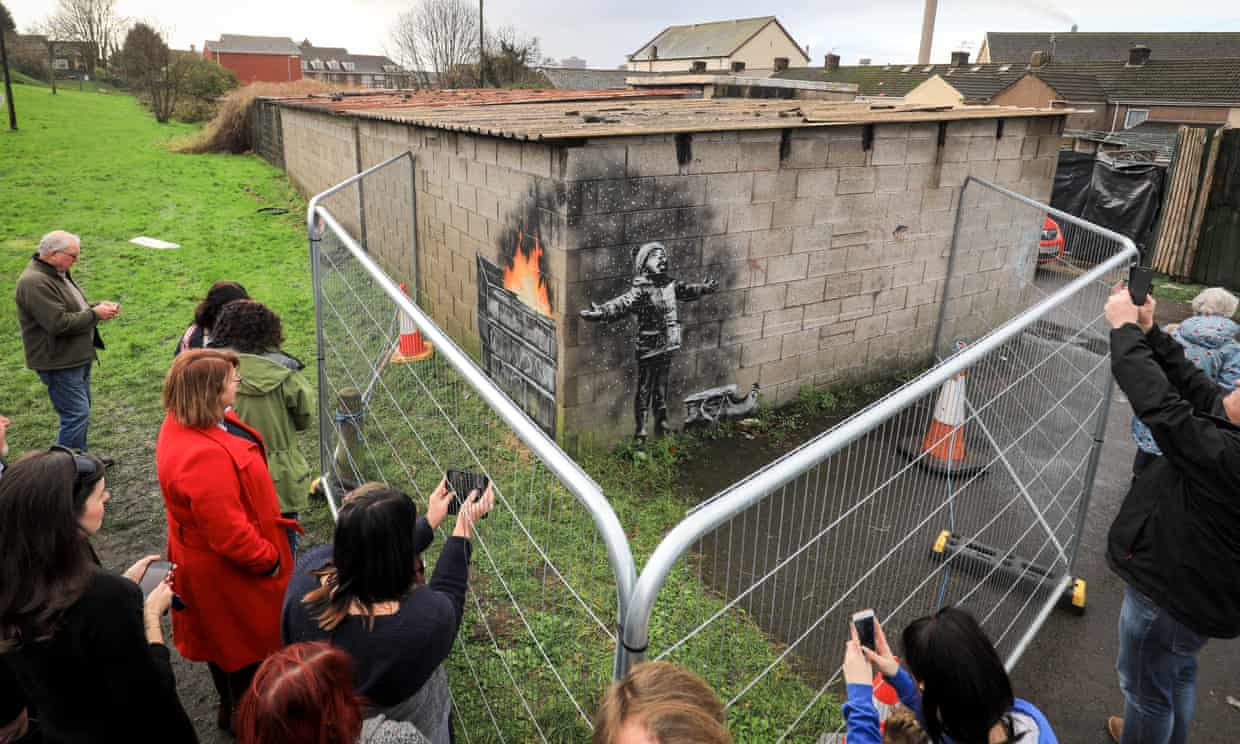I have no design statement here, but only wanted to archive and document some images and stories that reflect toxic subjects and late industrialism in events that occurred in the midst of our project here. In December 2018 The Guardian ran a series of articles and accompanying photographs covering the creation and aftereffects of a Banksy artwork in the town of Port Talbot, in Wales, where there is a Tata-owned steelworks. The artwork is described in one of the articles as "bittersweet," a term that could be applied (or misapplied, as you prefer) to many of Banksy's pieces, and at the very least points to the doubled, ambiguous, and/or contradictory qualities his work embodies.The images here need to be viewed and read in light of a much longer and quite complex history that Banksy's artwork here, in its own indirect way, signals. Briefly: a few years earlier, Port Talbot residents and workers organized to keep the steelworks open after Tata threatened to close it, putting 4,000 out of work. This provoked a "national crisis" in 2016 (these and other steelworks had once been British Steel but were later privatized, with India-based Tata the most recent owner), resolved in part through workers accepting pension cuts. (See https://www.theguardian.com/business/2017/feb/15/tata-steel-workers-agree-to-pension-cuts-to-save-8000-jobs) These events became the subject of a 2017 National Theatre Wales production called "We're Still Here," a play based on research and extensive interviews with Port Talbot workers and in which a number of community members performed. (See https://www.theguardian.com/stage/2017/sep/15/story-of-our-fight-port-talbot-locals-play-steelworks-were-still-here) In early 2018, Port Talbot was named the UK's "most polluted city" by the World Health Organization; WHO soon apologized and retracted this claim, saying "the particulate pollution figure of 18 micrograms [of PM2.5] per cubic metre of air for Port Talbot should have read 9.6." (See https://www.npt.gov.uk/1410?pr_id=5911)In short: what Banksy seems to be "figuring out" here is the double bind of (late) industrial livelihood, in which communities work for, and work to keep and even welcome, the conditions of their own poisoning, hidden behind their backs, around the corner.
Description

